 In November 1952 work started on the building of the NATO Joint Head Quarters (JHQ) on open land consisting of some forest and a great deal of boggy, swampy areas within the Rheindahlener Wald and in October 1954 was ready for occupation, despite the coldest winter for 50 years. In the following year, Queen’s School, Rheindahlen, opened to provide day Secondary school facilities for the children living in the new NATO Headquarters and the adjacent British Garrisons and RAF Stations in the lower Rhineland.
In November 1952 work started on the building of the NATO Joint Head Quarters (JHQ) on open land consisting of some forest and a great deal of boggy, swampy areas within the Rheindahlener Wald and in October 1954 was ready for occupation, despite the coldest winter for 50 years. In the following year, Queen’s School, Rheindahlen, opened to provide day Secondary school facilities for the children living in the new NATO Headquarters and the adjacent British Garrisons and RAF Stations in the lower Rhineland.
The school opened with the following staff: Headmaster – George Wright, Deputy Head – Trevor Benyon
Other early staff were: Jimmy Morgan, Cedric Francis, John Meiklejohn, Ian McGillivary, Sara Lancashire, John Stallwood, Beryl Harmer, Henry Chignall, Peter Wilcockson, Chris Hardy, Eddie Edwardson, Dorothy Abbot, Valda Bland, David Purvis, Elizabeth Browning, Joanne Barry, Gerry Beaver and later Ray Cork, Ian Walker and Malcolm Christianson.
The caretaker was Mr Johnson, the Clerical Officer was G Wilson and the Senior Mistress was Pauline Webber. Also joining the staff were Audrey Williams, Padre Sellars, Iris Lancashire and Brian Sullivan.
One of the first pupils of the school, Peter Williams, recorded his memories of JHQ and Queens’ early days as follows:
| “My own arrival in 1954 was from Bad Oeynhausen by train. I recall Moenchengladbach was still then badly damaged. Woolworth’s was the only new building in sight. We moved into 20 Norwich Walk and the whole camp was still very much a building site, with the Big House not fully completed. There was very little vegetation and the ground was very swampy. One small child was even killed when sucked under.
Children of secondary school age had to go to school in a separate classroom of the Junior School (St George’s) until January 1955 when 50 pupils were housed in two classrooms of the Army Education Centre as the nucleus of Queen’s School. That winter was particularly harsh with very deep snow for what seemed long periods. But living in centrally heated houses and having full stomachs was absolute luxury for all of us with memories of chilblains, coal fires and recent rationing. In fact, until the end of occupation in April 1955, all families received RASC (Royal Army Service Corps) rations and were able to use military vehicles driven by GSO (General Staff Officers) as very cheap taxis. Hardly anyone had a car. However, our next door neighbour was a US Army sergeant who had a deep freeze which he managed, just, to fit in the hallway and had three large American cars parked in the road! Our other neighbour was a Royal Signals Corporal who was chosen to meet the Princess Royal when she visited in about 1957. I do remember that a great deal of extra maintenance was carried out on all the houses in the street before her visit! You might like to know that children of Queen’s School helped to excavate the archaeological sites of the South West Extension in 1955-56 and found various items of historic importance. Several children at Queen’s at the time were the sons/daughters of German parents, whose fathers had been killed during the war and mothers had remarried a British soldier. One such boy was a classmate who worked for many years at Rheindahlen Garrison as a Police translator/interpreter” |
Schools were part of the early development plans but the building programmes were subject to delays. On the 10’th January 1955, 50 secondary pupils assembled in the Army Education Centre and were taught there for a term. At Easter 1955, a Primary school, St George’s, then without pupils, became home to Queen’s School and in September 1955, 283 secondary pupils finally moved into the purpose built school.
The school site consisted of what is now call South Block, the Gymnasium and the Old Hall and was only for Years 9-12. The current bowling alley catered for Years 7 and 8. The Scout Hut was the Art and Commerce block and the (now) Ladybird Nursery behind the Fire Station was the Crafts block.
Pupils were organised into four houses, Cornwall, Edinburgh, Kent and Gloucester. The house system remained in place for almost twenty five years when it was replaced with by a tutor system in order to promote greater involvement in competitive activities.
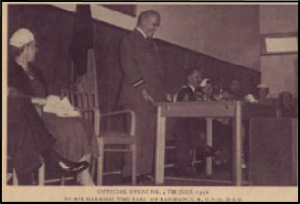

Almost a year later, after the official opening on 4t’h July 1956 by Air Marshall, The Earl of Bandon, CB, CVO, DSO, Commander-in-Chief Second Allied Tactical Air Force, there were 420 pupils and temporary accommodation was needed. The Education Centre, a canteen, St David’s School, the Church Centre, the RAF Amenities Centre, The Royal Signals Block, RAF trailers, the Scout Hut and the Youth Hut were all used at some stage. The board commemorating the opening ceremony can still be seen in Windsor School.
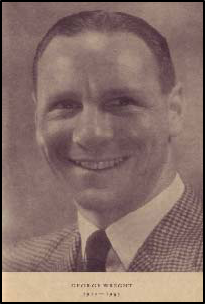
| “Sept. 14th 1955
Today Queen’s School assembled in its permanent home. Historical Note The building was scheduled to open in January 1955, and certain staff were appointed to commence duty in that month. In fact the project was in its infancy, but because of pressure of numbers in the local primary schools it was necessary to afford relief by taking those of Secondary age into temporary quarters in 34 Army Education Centre. Conditions were primitive, equipment non-existent. One room planned as a Domestic Science room had an all tiled floor! (Matting was ordered for this – it arrived three days before evacuation). Nevertheless the staff concerned performed wonders, and parental confidence was gained. Miss Coe coached boys’ football with gusto – and inspired enthusiasm. During the Easter holiday a move was made to the Primary School in Wolseley Road. Staff, pupils, and classrooms were doubled in number. The same is true of educational problems. Pupils rightly belonging to Forms 1, 2, 3, 4 of a Grammar School, to the first four years of Secondary Modern, and even to Special Schools were included in the final 100. Transport difficulties reared their ugly heads. This is destined to be a cross to be carried permanently and one which must inevitably hinder full education progress and cause infinite frustration. The building, next promised for April, with an inflexible guarantee for June, was finally taken over, in part, on July 29th – the last day of the Summer Term. This made it impossible to successfully move stock and equipment before staff departed for holiday. A mammoth task was accomplished in the face of unconceived difficulty during August. B.F.E.S. surely owes its gratitude to those members of staff (and pupils) who voluntarily worked to enable the target date of September 14’th to be reached. I believe that the equipment ordered through the past twelve months, and which is now in place puts this school in the same position as were its predecessors at Ploen and Wilhelmshaven two years after their opening. On opening day 284 children were in attendance. The breakdown is as follows:-
The problems which must be faced in the future are self evident following a study of these figures. Staff on opening day: 22 British Teaching Staff. Of these 10 arrived from U.K. at this school on Sept. 6th. Dining Arrangements: Stretched to breaking point. 235 meals were served and an overhaul of arrangements must be made. An effort to dissuade (at the very least) children living within the H.Q. area from dining at school is necessary. Source: Queens School Log Book |
His comment recorded in the log book on the second day of the term clarifies his concerns with the catering arrangements.
| “Mid-day meal organisation extremely difficult. It is two-fold: a most inadequate kitchen, a small hall. Good social training will tax the staff to the limit. The ACC (Army Catering Corps) are helping by providing a competent cook.” |
Mr George Wright died on 21’st December of the same year, 1955, as he returned home to the UK on his first leave since taking office.
The Queen’s School song, written by the Music master, David Purvis, was printed in the first edition of the Queens Courier.
Set deep in foreign soil,
Must bear aloft the right and truth Gained by our forbears’ toil.
Four Houses here within one School Unite with common aim
That our example, work and play Achieve a worthy name.
Her people, fearless, brave the seas
In storm, in peace, in war.
Of Edinburgh’s fortress rock
No conqueror can boast:
Its every strength has won respect
And peace from coast to coast.
Beside the Severn stand,
A symbol of our ancient faith,
The spirit of our land:
Invaders fear, whilst travellers greet,
The chalk-white cliffs of Kent,
And from her orchards, thick with bloom,
Our nation draws content.
We hold to, all our days.
For youth to-day, to-morrow leads,
And guides our country’s ways.
So strive we must, and knowledge gain,
That war shall one day cease,
For through our work the future’s built,
And, through our learning, peace:
“Pax a Discendo”.
Words and Music by David Purvis LRAM, Music master, Queen’s School (appointed September 1955)
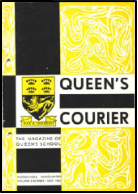
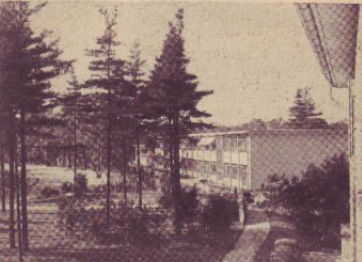

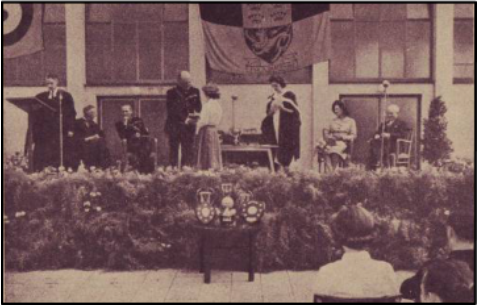
The rapid expansion of JHQ soon created a demand that was 50% in excess of Queens’ capacity. To manage the shortfall admission was restricted to the children of families living within the JHQ complex.
Children brought in from families outside JHQ were forced to board and it was was clear that greater provision was required.
In 1963 the school was at its largest with 1,100 pupils aged 11-18 years who were accommodated on four main sites until the years 1975-78.
When the three RAF Air Bases were built at Bruggen, Wildenrath and Laarbruch there was a need for another secondary school in the area to accommodate the extra numbers. At the same time pupils from SHAPE and a variety of ISODETS required boarding provision. The site chosen was an old Franciscan Monastery at Hostert, just north west of Hardt village.
The site had been converted into an emergency military hospital in the early 1960’s for use in the event of war.
The building was again converted, this time into a school and became Kent School in 1964 with boarders based at Chatham House and Deal House on JHQ, along with boarding at Medway House, close by Kent School.
Medway catered for weekly boarders with the other two housing the termly boarders. Stories of ghosts in the old Medway building still exist.
In 1976 new buildings consisting of North Block, East Block and the Sports Hall were completed adjacent to the original Queen’s School building and 900 pupils had, at long last, a single home, opened by General Sir William Scotter KCB, OBE, MC, Commander-in-Chief BOAR on 29th March 1979.
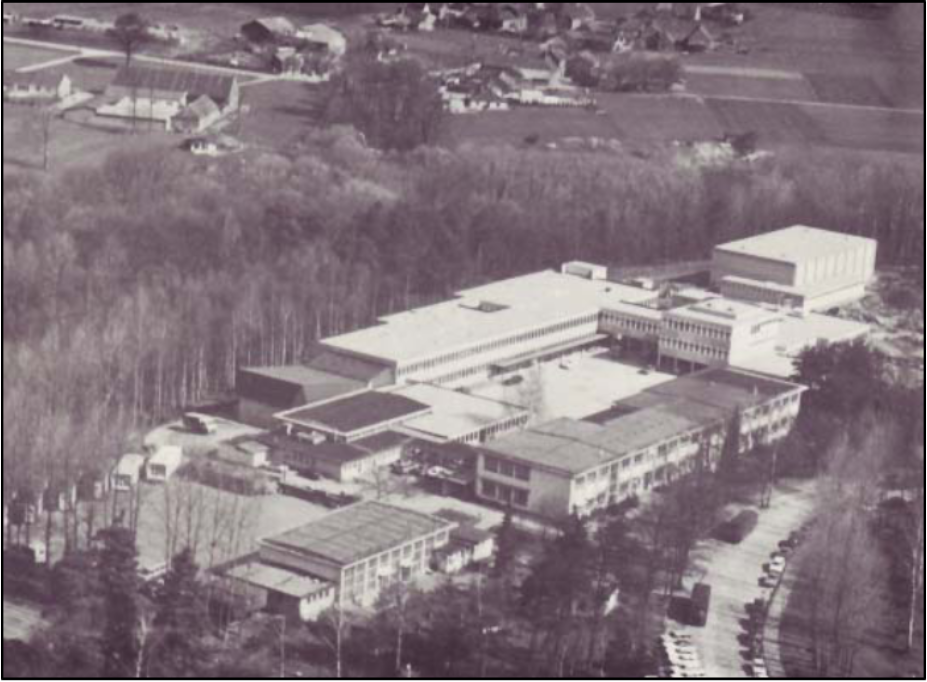
| “As I sit in the pleasant surroundings of a Queen’s School approaching it’s Silver Jubilee it is salutary to trace in outline how it has developed in the 25 years.
On January 10th 1955, 50 pupils assembled in two rooms in Cambridge House. After Easter four classrooms in the just completed St. George’s School were taken over for a term and finally in September the ‘new’ building (i.e. the block we have recently had re-furbished) was taken over and the school population was 283 – a year later 420. As the building had been designed for 350 the pattern of quarts and pint pots was commenced and ‘provisional’ accommodation was sought ‘temporarily’ elsewhere. An extension (present rooms 45 and 58) was completed in 1957 and two rooms in the Army Instructional Centre were used as a 1st year base. (Pupil total now 550). By the early 60’s plans were completed for taking over part of the British Military Hospital in Hostert (now Kent School) as an annexe but varying factors delayed, then finally prevented this. Meanwhile RAF trailers were used for class-rooms (the last one to leave us was the PE store until a few months ago). Alternative room-space was made in the converted German canteen still bearing the sign ‘Lower School’, St. David’s School, the Church Centre, RAF Amenities Centre, Royal Signals block, and Cambridge House helped out, Block 22 (now the new Youth Centre) was taken over and Block 4 (near the Globe cinema) was the Craft Centre. As early as 1963 when the school peaked at 1100 pupils, spread on 4 main sites, with some 1st year pupils having to remain in their Primary Schools there was talk of a building to take the whole school on the present Snyder’s Road site. The Library was added in 1968 but planning for the major building project necessary took many years (and several MPBW / DOE / PSA architects!). Initially 1973 was given as completion date – for a variety of reasons covered by the word ‘slippage’ 1978 proved to be the year. And so I have come full circle, back to the present excellent school buildings opened officially in March of this year. However, I can think of no more fitting way to end this piece than by quoting from a Queen’s Courier published when difficulties were greatest “…although excellent buildings can be a great asset to any organisation nevertheless it is the people in that organisation, and particularly in a school, that really make or mar it.” |
Windsor House and School House opened in 1982 and 1983 to cater for boarders. School House situated next to the school with Windsor House about a half mile away on JHQ. The building used by School House was originally used as quarters for single teaching staff.
In March 1987 the IRA planted and detonated a bomb close to the Officers’ Mess on JHQ. A number of windows in Chatham House were blown out as a result of the blast but due to the heavy curtains being closed at the time no-one was injured.
In November 1987 Queen’s School achieved a Schools Curriculum Award in recognition of their contribution to the theme of the School at the Heart of the Community.
As a result of falling numbers Queen’s School and Kent School were closed and then reopened under the new name of Windsor School on the site of Queen’s School. It took it’s name following the closure of the original SCE Windsor School in Hamm in 1985. Windsor School, Hamm, itself was formed from the amalgamation of Windsor Boys School and Windsor Girls School both of which had existed in Hamm since the early 1950’s.
Headteachers of Queens School
1955 – 1955 Mr G Wright B.Sc (Founding headteacher)
1956 – 1956 Mr T G Benyon (Acting)
1956 – 1959 Mr J V Taylor B.Sc, A.R.I.C.
1960 – 1972 Mr W B P Aspinall OBE, MA
1972 – 1976 Mr R P Gaskell B.A, M.Ed
1976 – 1987 Mr J Lovegrove (became headteacher at Prince Rupert School, Rinteln)
Source: Copied, and slightly modified, from an article on www.school-portal.co.uk










